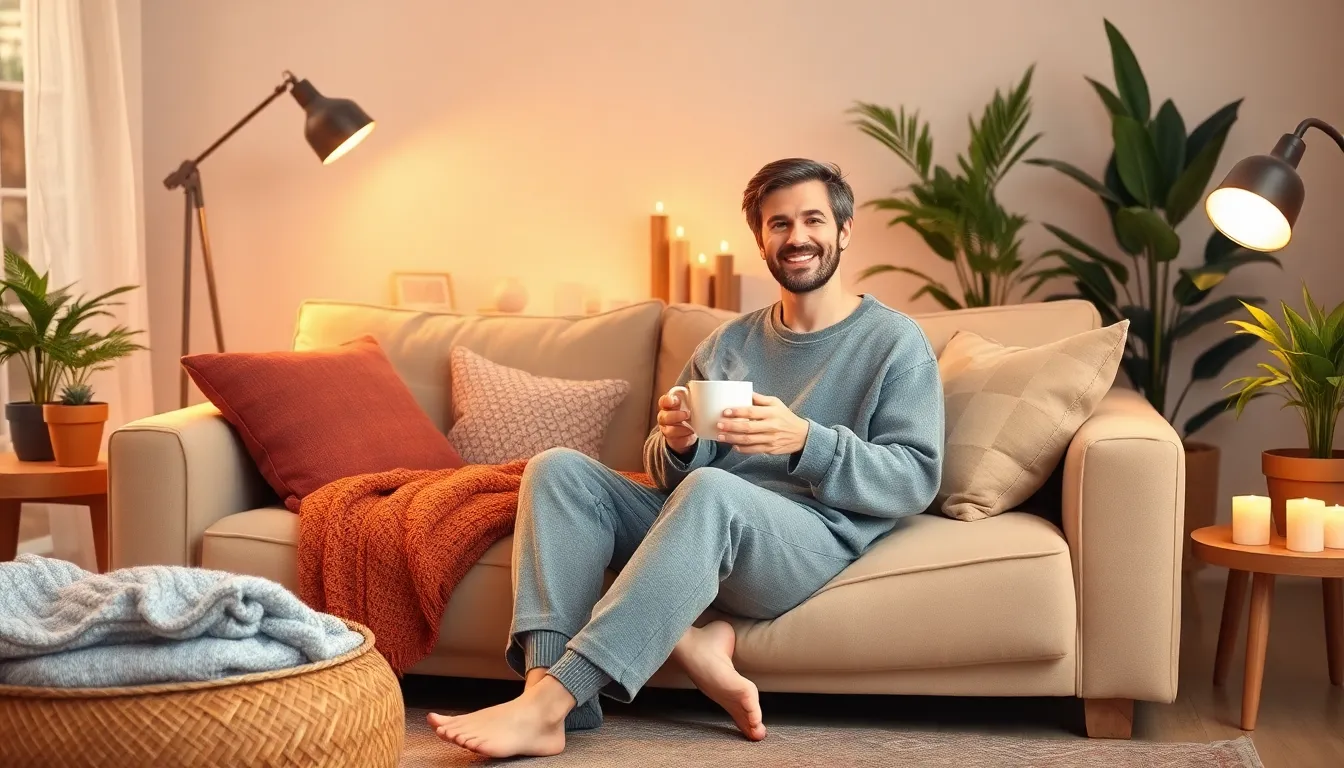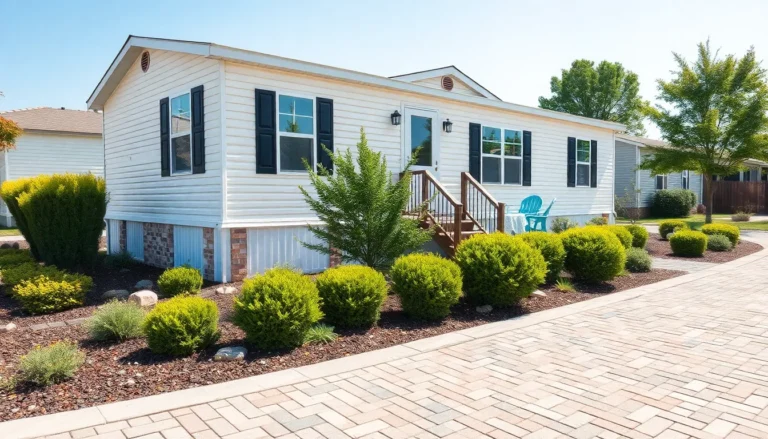Table of Contents
ToggleImagine stepping into a cozy haven where every corner whispers comfort and warmth. That’s the magic of hygge home design. Originating from Denmark, hygge (pronounced “hoo-gah”) isn’t just a style; it’s a lifestyle that transforms ordinary spaces into delightful retreats. It’s about creating an atmosphere that invites relaxation, sparking joy in every cozy nook.
If you’ve ever wished for a home that feels like a warm hug on a chilly day, look no further. Hygge design embraces simplicity, natural materials, and soft lighting, making even the smallest spaces feel inviting. Get ready to throw on your favorite sweater, sip hot cocoa, and discover how to turn your home into the ultimate sanctuary. With hygge, every day can feel like a cozy Sunday, and who wouldn’t want that?
What Is Hygge Home Design?
Hygge home design creates a cozy, inviting atmosphere in living spaces. This philosophy focuses on simplicity, natural materials, and warm lighting to foster comfort and relaxation.
The Origins of Hygge
Hygge traces its roots to Denmark, where it emerged as a lifestyle centered on warmth and happiness. The term itself originates from the Norwegian word ‘hugga’, meaning to comfort or console. Danish culture widely embraces hygge, shaping how people interact with their environments. Historically, this tradition developed during long winters, leading to a strong appreciation for coziness and social connection. Many Danes incorporate hygge into their daily routines, such as sharing meals or enjoying quiet evenings with loved ones.
Key Principles of Hygge
Key principles of hygge focus on creating a sense of well-being. Emphasis is placed on comfort, utilizing soft fabrics and cushions to enhance coziness. Warm lighting plays a vital role, with candles and soft lamps contributing to a relaxed atmosphere. Natural materials also hold significance; wood, stone, and plants foster a connection to nature. Minimalism and clutter reduction create open spaces, allowing for calmness and tranquility. Generally, hygge encourages mindfulness, promoting awareness of the simple joys in life like sharing tea and engaging in heartfelt conversations.
Elements of Hygge Home Design

Hygge home design emphasizes comfort and warmth through various key elements. Three essential components are cozy textiles and fabrics, warm lighting solutions, and natural materials combined with colors that evoke tranquility.
Cozy Textiles and Fabrics
Soft blankets and plush cushions welcome relaxation. Wool, cotton, and linen materials enhance comfort while inviting touch. Layering different textures creates visual interest and warmth. Fleece throws can provide added coziness on chilly evenings. Incorporating throws and pillows in neutral tones promotes a soothing atmosphere.
Warm Lighting Solutions
Ambient lighting plays a crucial role in setting a hygge environment. Warm white bulbs create a soft glow that feels inviting. Candles add a personal touch, creating intimate moments and enhancing relaxation. Floor and table lamps with shades diffuse light, eliminating harshness. Dimmer switches offer versatility, allowing adjustment based on mood.
Natural Materials and Colors
Using wood, stone, and plants connects interiors with nature. Natural textures inspire warmth and simplicity throughout spaces. Earthy colors like beige, soft greens, and browns promote calm and serenity. Integrating indoor plants enhances air quality and adds life to rooms. A minimalist approach fosters tranquility, encouraging an appreciation for simple beauty.
How to Create a Hygge Space
Creating a hygge space centers on cultivating warmth and comfort in your home. Focus on key elements to transform your environment into a serene retreat.
Choosing the Right Furniture
Select furniture that promotes relaxation and connection. Sofas should be plush and inviting, encouraging family gatherings and conversations. Opt for natural materials like wood, which add warmth and character. Additionally, consider multifunctional pieces that maximize space while enhancing comfort. Low tables can invite easy accessibility for cozy gatherings, while soft lighting nearby enhances the mood. Aim for a balanced arrangement that fosters intimacy and invites downtime.
Incorporating Personal Touches
Add personal touches that reflect individual styles and stories. Photographs, artwork, and handmade crafts bring character to the space. They should evoke fond memories and a sense of belonging. Display a collection of favorite books or mementos on shelves to inspire connection and leisure. Plants also play a vital role, bringing nature indoors and improving air quality. Finally, select decorative items that spark joy, fostering a comforting environment. Personal touches create unique spaces that truly embody the essence of hygge.
Benefits of Hygge Home Design
Hygge home design offers numerous benefits that enhance living spaces. This philosophy promotes comfort and well-being, transforming ordinary homes into sanctuaries.
Emotional Well-being
Emotional well-being thrives in a hygge environment. Cozy settings foster relaxation and reduce stress. Warm light from candles and soft fabrics nurture a sense of safety. Personal touches, like photographs and cherished memorabilia, encourage a connection to self and others. Each element contributes to an atmosphere that improves mental health. Individuals experience greater happiness through simple moments spent at home, reminding them of joy and contentment.
Enhanced Comfort
Enhanced comfort defines hygge home design. Plush sofas and soft blankets invite relaxation and connection. Natural materials like wood and stone create a warm, inviting feel. Tranquil colors, alongside calming textures, promote serenity in spaces. These features encourage gatherings and meaningful interactions among family and friends. Home becomes a place for connection, happiness, and rejuvenation. Each design choice reinforces the intention of creating a cozy retreat that envelops individuals in comfort and warmth.
Embracing hygge home design transforms spaces into havens of comfort and warmth. By focusing on simplicity and natural elements, individuals can create a sanctuary that nurtures emotional well-being. The integration of cozy textiles, warm lighting, and personal touches fosters connections and invites relaxation.
This design philosophy not only enhances the aesthetic but also promotes mindfulness and appreciation for life’s simple pleasures. With hygge, every corner of the home can become a source of joy and tranquility. Ultimately, adopting this approach leads to a more fulfilling and connected living experience, making each day feel like a cozy retreat.




